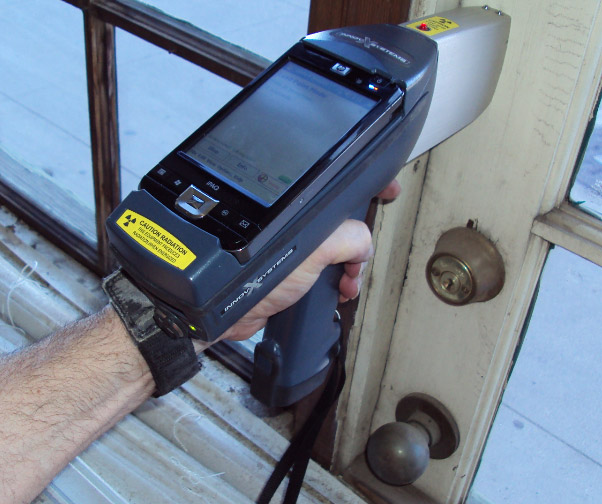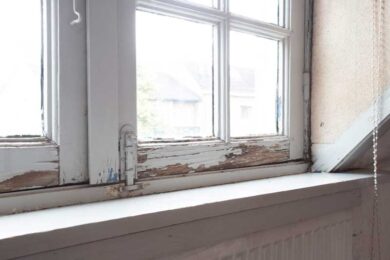Comprehensive Lead Paint Removal Service in NYC-- Certified and Licensed
Comprehensive Lead Paint Removal Service in NYC-- Certified and Licensed
Blog Article
Comprehensive Guide on Effective Lead Infraction Elimination Strategies
In the world of environmental safety and security, addressing lead infractions demands a careful and organized method. This comprehensive overview starts by highlighting the essential first actions of recognizing lead hazards through innovative assessment and screening methods. The overview elaborates on the relevance of sticking to rigorous safety and security protocols during the elimination procedure, consisting of the use of proper PPE and isolating influenced locations.
Recognizing Lead Dangers
Identifying lead dangers is a crucial first step in alleviating the risks related to lead direct exposure. Lead, a hazardous metal, can be existing in various ecological mediums, including paint, dirt, water, and dirt. It poses extreme health and wellness dangers, specifically to kids and expectant females, bring about neurological damage and developmental hold-ups. As a result, precise recognition of potential lead resources is necessary for effective removal.
The first stage in identifying lead threats entails comprehending usual lead sources within the developed atmosphere. Frameworks developed prior to 1978 are especially susceptible as a result of the common use lead-based paint during that duration. Additionally, soil contamination can occur from wearing away outside paint, commercial discharges, or historic use leaded gas.
One more considerable resource is lead piping and plumbing components, which can leach lead into drinking water. Durable goods such as toys, porcelains, and imported products might also consist of harmful lead levels. Notably, work environments and leisure activities including lead can track pollutants right into homes.
Evaluation and Screening
When addressing lead risks, efficient evaluation and screening are paramount. This crucial action ensures the identification and quantification of lead existence, thus leading subsequent removal initiatives. Initial assessment commonly includes a visual examination to identify prospective lead sources, such as deteriorating paint or polluted dust. This is enhanced by more rigorous testing methods to ascertain the extent of contamination.

Dirt wipe sampling is another essential technique, specifically in property setups. By accumulating examples from floors, windowsills, and other surface areas, this technique supplies understandings right into prospective exposure threats. Moreover, dirt testing around structure boundaries is essential to identify lead contamination that can pose dangers, specifically to youngsters.
Safe Removal Treatments
Upon finishing comprehensive analysis and screening, carrying out secure removal treatments is the following critical phase in attending to try this web-site lead hazards. This procedure makes certain that lead-contaminated products are properly and safely gotten rid of, lessening risk to both workers and homeowners. The very first step entails isolating the afflicted location utilizing plastic sheet and correct securing techniques to avoid the spread of lead dirt.
Workers should don ideal personal protective equipment (PPE), consisting of respirators, gloves, and disposable coveralls, to alleviate exposure. Employing specialized tools and wet approaches, such as damp fining sand or using HEPA-filtered vacuums, minimizes the dispersion of lead fragments. It is critical to avoid dry fining sand or abrasive blowing up, as these methods can generate hazardous lead dust.
Waste disposal is an additional vital component; all contaminated materials must be firmly bagged and identified according to EPA and regional policies. In addition, complete cleansing of the workplace with HEPA vacuum cleaners and wet wiping makes certain the removal of residual lead fragments.
Post-Removal Verification

Confirmation of effective lead elimination, referred to as post-removal confirmation, is crucial to ensure the security and habitability of the remediated location. This process entails a series of precise assessments and tests created to detect any kind of residual lead fragments that may posture wellness dangers. The preliminary step normally includes an aesthetic evaluation to examine the conclusion and quality of the remediation job. This assessment makes sure that all recognized sources of lead have actually been resolved which no noticeable indications of contamination continue to be.
Adhering to the visual examination, ecological tasting is carried out. This includes gathering dirt, soil, and occasionally water samples from the remediated area. Recognized labs evaluate these samples to determine lead levels, guaranteeing they fall below the security limits developed by governing bodies such as the Environmental Security Firm (EPA)
Additionally, air top quality screening might be carried out to detect air-borne lead particles, specifically in instances where extensive lead-based paint removal or remodelling has actually taken place. The outcomes of these examinations supply quantitative data validating that the lead degrees are within allowable limitations.
Ultimately, post-removal confirmation works as a vital checkpoint, validating the performance of the lead abatement initiatives and securing the health of residents and visitors.
Safety Nets and Upkeep

An essential preventative step consists of using lead-safe accredited contractors for any type of renovation, repair service, or painting activities. These specialists are learnt methods that decrease lead dust and particles. Furthermore, keeping anonymous painted surfaces to stay clear of chipping or peeling is crucial, as weakening paint can launch lead fragments into the atmosphere.
Educational campaigns targeting homeowner and renters relating to the threats of lead and the importance of reporting any type of prospective threats can further improve precautionary initiatives. Routine cleaning utilizing HEPA vacuum cleaners and damp wiping strategies can significantly decrease lead dust build-up.
Conclusion
In summary, efficient lead infraction removal requires a careful strategy incorporating comprehensive evaluation, accurate testing, and strict removal procedures. Guaranteeing security with appropriate isolation and personal protective tools continues to be vital. Post-removal confirmation via environmental sampling and air high quality screening confirms conformity with well-known safety and security requirements. Ongoing assessments and upkeep are necessary to alleviate future lead hazards, consequently securing public health and guaranteeing continual conformity with governing requirements.
Report this page